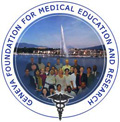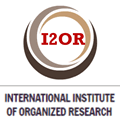Fetal Gastroschisis. Case presentation
Keywords:
gastroschisis, abdominal cavity, birth defect, genetic counselingAbstract
Introduction: Gastroschisis is a congenital defect characterized by incomplete closure of the abdominal wall, usually to the right of the umbilical cord. The cause is multifactorial. Ultrasound is the primary tool in the diagnosis and follow-up of this disease.
Patient information: A 21-year-old pregnant woman, primigravida, white skin, rural background, ninth-grade education, with no medical history, at 22.5 weeks' gestation, underwent genetic ultrasound; her fetus was diagnosed with gastroschisis. Genetic counseling was provided, and the pregnant woman and her family opted for voluntary termination of the pregnancy. A stillborn female fetus weighing 480 g was obtained, with intestinal loops outside the abdominal cavity.
Conclusions: Gastroschisis is one of the most common congenital malformations of the abdominal wall. It is diagnosed by ultrasound and treated surgically, but because it is associated with multiple complications, voluntary termination of pregnancy is often the option, following genetic counseling, as occurred in this case.
Downloads
References
1. Machuca Vaca AJ. Gastrosquisis: resultados en una institución de tercer nivel. Perinatol Reprod Hum [Internet]. 2017 [citado 06/05/2024]: 31(2): [aprox. 2p.]. Disponible en: https://www.elsevier.es/es-revista-perinatologia-reproduccion-humana-144-articulo-gastrosquisis-resultados-una-institucion-tercer-S0187533717300493
https://doi.org/10.1016/j.rprh.2017.10.006
2. Ormaechea M. Gastrosquisis: análisis de situación entre los años 2011 y 2016 en el Hospital Pediátrico Pereira Rosell. Anfamed [Internet]. 2019 [citado 11/03/2025]; 6(1): [aprox. 3p.]. Disponible en: http://www.scielo.edu.uy/scielo.php?script=sci_arttext&pid=S2301-12542019000100130
https://doi.org/10.25184/anfamed2019v6n1a5.
3. Villamil V, Aranda García JM, Sánchez Morote R, Ruiz Pruneda M, Fernández I, et al. Protocolo de manejo de las gastrosquisis. Cir Pediatr. [Internet]. 2017; [citado 06/03/2025] 30(1): [aprox. 3p.]. Disponible en: https://secipe.org/wordpress03/index.php/lista-articulos/?cid=83
4. Oluwafemi OO, Benjamin RH, Navarro Sanchez ML, Scheuerle AE, Schaaf CP, Mitchell LE, et al. Birth defects that co-occur with non-syndromic gastroschisis and omphalocele.Am J Med Genet A [Internet]. 2020 [citado 06/03/2025]; 182(11): [aprox. 6p.]. Disponible en: https://pubmed.ncbi.nlm.nih.gov/32885608/
https://doi.org/10.1002/ajmg.a.61830
5. Fisher SC, Howley MM, Romitti PA, Desrosiers TA, Jabs EW, Browne ML; et al. Maternal periconceptional alcohol consumption and gastroschisis in the National Birth Defects Prevention Study, 1997-2011. Paediatr Perinat Epidemiol [Internet]. 2022 [citado 11/03/2025]; 36(6): [aprox. 4p.]. Disponible en: https://pubmed.ncbi.nlm.nih.gov/35437856/
https://doi.org/10.1111/ppe.12882
6. Chuaire Noack L. New clues to understand gastroschisis. Embryology, pathogenesis and epidemiology. Colomb Med (Cali) [Internet]. 2021 [citado 06/03/2025]; 52(3):e4004227. Disponible en: https://pubmed.ncbi.nlm.nih.gov/35431359/
https://doi.org/10.25100/cm.v52i3.4227
7. Tiruneh C, Gebremeskel T, Necho M, Teshome Y, Teshome D, Belete ABirth prevalence of omphalocele and gastroschisis in Sub-Saharan Africa: A systematic review and meta-analysis. SAGE Open Med [Internet]. 2022 [citado 11/03/2025]; 10:[aprox. 2p.]. Disponible en: https://pubmed.ncbi.nlm.nih.gov/36161211/
https://doi.org/10.1177/20503121221125536
8. Stallings EB, Isenburg JL, Short TD, Heinke D, Kirby RS, Romitti PA, et al. Population-based birth defects data in the United States, 2012-2016: A focus on abdominal wall defects. Birth Defects Res [Internet]. 2019 [citado 11/03/2025]; 111(18): [aprox. 4p.]. Disponible en: https://pubmed.ncbi.nlm.nih.gov/31642616/
https://doi.org/10.1002/bdr2.1607
9. Bhat V, Moront M, Bhandari V. Gastroschisis: A State-of-the-Art Review. Children (Basel) [Internet]. 2020 [citado 06/02/2025]; 7(12): [aprox. 2p.]. Disponible en: https://pubmed.ncbi.nlm.nih.gov/33348575/
https://doi.org/10.3390/children7120302
10. Rentea RM, Gupta V. Gastroschisis. [Internet]. Treasure Island (FL): StatPearls Publishing; 2025 [citado 11/03/2025]. Disponible en: https://pubmed.ncbi.nlm.nih.gov/32491817/
11. Diyaolu M, Wood LS, Bruzoni M. Sutureless closure for the management of gastroschisis. Transl Gastroenterol Hepatol [Internet]. 2021 [citado 06/02/2025]; 6:[aprox. 2p.].Disponible en: https://pubmed.ncbi.nlm.nih.gov/34423152/
https://doi.org/10.21037/tgh-20-185
12. Joyeux L, Belfort MA, De Coppi P, Basurto D, Valenzuela I, King A, et al. Complex gastroschisis: a new indication for fetal surgery? Ultrasound Obstet Gynecol [Internet]. 2021 [citado 06/02/2025]; 58(6): [aprox.4p.]. Disponible en: https://pubmed.ncbi.nlm.nih.gov/34468062/
https://doi.org/10.1002/uog.24759
13. Durmaz LO, Brunner SE, Meinzer A, Krebs TF, Bergholz R. Fetal Surgery for Gastroschisis-A Review with Emphasis on Minimally Invasive Procedures. Children (Basel). [Internet]. 2022 [citado 11/03/2025] 9(3): [aprox. 2p.]. Disponible en: https://pubmed.ncbi.nlm.nih.gov/35327788/
Downloads
Published
How to Cite
Issue
Section
License
Authors who have publications with this journal agree to the following terms:
- Authors will retain their copyright and assign to the journal the right of first publication of their work, which will simultaneously be subject to a Creative Commons License / Attribution-Noncommercial 4.0 International (CC BY-NC 4.0) that allows third parties to share the work as long as its author and first publication in this journal are indicated.
- Authors may adopt other non-exclusive license agreements for distribution of the published version of the work (e.g., depositing it in an institutional repository or publishing it in a monographic volume) as long as the initial publication in this journal is indicated.
- Authors are allowed and encouraged to disseminate their work through the Internet (e.g., in institutional telematic archives or on their web page) before and during the submission process, which can produce interesting exchanges and increase citations of the published work. (See The effect of open access).





 november 15 2025
november 15 2025


